Combat aircraft. Such an inconspicuous Anson veteran
Many experts have criticized this aircraft. Many kept it for comparison as the worst.
And yet, this plane only served in the Royal Air Force of Great Britain for 34 years. It was put into service in 1935, "fired" in 1968. For an unsuccessful design, it is somehow too much, is not it?
Go to history.
Postal Avro-652
Again, the Anson was not meant to be a combat vehicle. It was designed as a passenger plane. A modern for that time project of a cantilever monoplane with bells and whistles. Many designers in different countries have designed such machines. The same Heinkel, Dornier and Junkers, for example.
But the Germans designed their passenger vehicles to be used as bombers. And here is a somewhat different matter.
Back in 1933, Imperial Airways ordered aviation to AVRoe & Co., which we know by its abbreviated name "Avro", the construction of a small airplane for mail transport.
Avro Chief Designer Roy Chadwick designed the funky Avro-652 airplane.
The plane was simple, but not a masterpiece. Twin-engine (270 hp Armstrong Siddeley "Cheetah" V engines), wooden (metal frame), even with retractable landing gear! True, the mechanism was driven by a hand winch. And to retract the chassis, it was necessary to turn the handle 140 times.
Two crew members sat side by side in the cockpit, control was duplicated, four passengers were accommodated in the cabin. With the controls, by the way, it is clear that someone has to drive the car into the climb while the co-pilot is removing the landing gear.
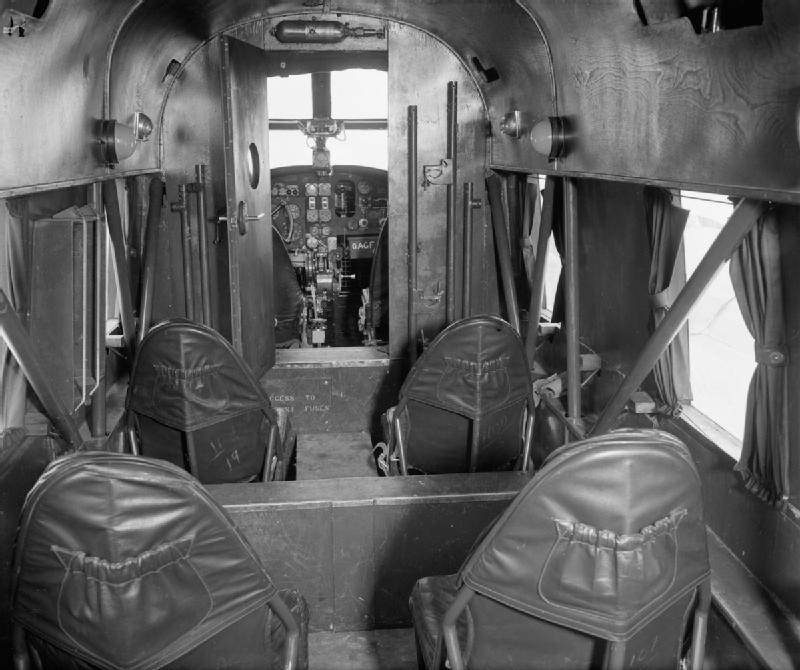
Patrolman Avro-652A
And now, a year later, when the British military department announced a competition for a patrol aircraft, the Avro management decided to participate. Why not? Put more powerful engines, a couple of machine guns - and it's in the bag!
This was the reason. A patrol plane is not a fighter jet. He must slowly (so that you can carefully examine the horizon) rattle at low altitude and at low speed. The main thing is long. And "Avro-652A" basically met these requirements.
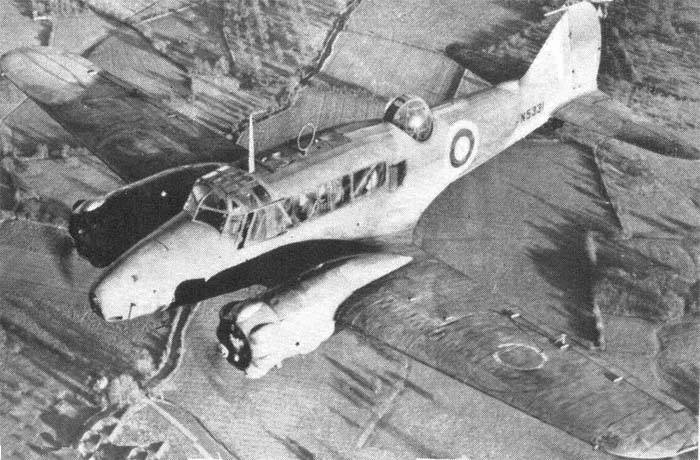
So the military option was born. The engines were installed "more powerful", as much as 295 liters. from. each. And defensive armament from two 7,69 mm machine guns. And in the former passenger compartment, an additional fuel tank and bomb bay were placed. Not the best neighborhood, but the plane could take almost 300 pounds of bombs.
The projects were considered, and unexpectedly two cars appeared in the final: our hero "Avro 652A" and "De Hevilland" DH-89M. By the way, "De Hevilland" also did not strain too much and also redesigned the passenger liner.
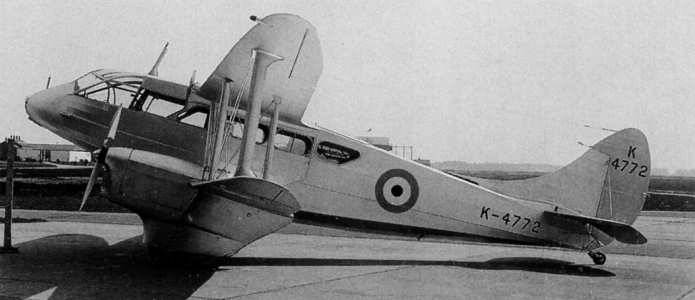
DH-89M
At the same time, Avro also released a civilian version. The aircraft received their own names "Avalon" and "Avatar" and successfully flew on the lines until 1939. But the company has already lost interest in civil engineering and threw all its efforts into a military order.
In general, in the conditions of the approaching war, it is a very reasonable move. And by the way, civilian "Avro" in 1941 requisitioned and sent to flight schools of the Air Force as training aircraft.
Well, on March 24, 1935, the first military Avro-652A took off.
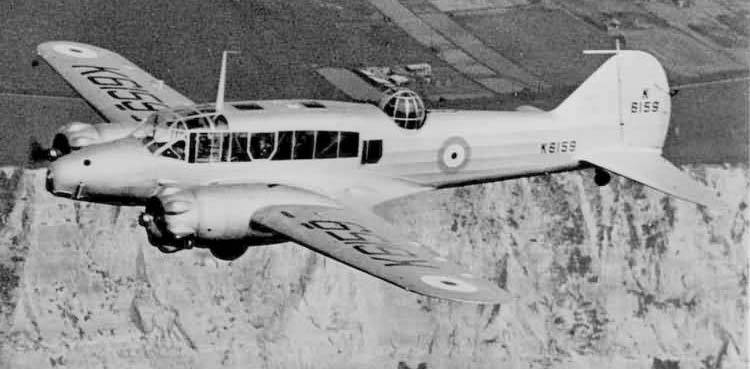
The plane differed from its ancestor both externally and internally. An Armstrong Whitwort turret from the Whitley bomber was installed on the plane (we wrote about this handsome man recently) under the Lewis 7,69-mm machine gun. The turret was not the height of aerodynamics and lightness, but there were plenty of them.
The second machine gun, a course one, was installed in the cockpit, on the left side of it.
The bomb load was placed under the floor of the passenger cabin, in the center section. Six holders supported two 100 lb (45 kg) bombs and four 20 lb (9 kg) bombs. You could also take flares and smoke buoys.
Armstrong Siddeley "Cheetah IX" engines with a capacity of 350 hp. from. could accelerate the plane to 300 km / h.
The crew consisted of three people, a pilot, a navigator pilot and a radio operator gunner.
The Avro-652A outperformed the competitor from De Hevilland, as the competitor flew even slower and at an even shorter range. And the brainchild of "Avro" was adopted, giving the aircraft the name "Anson", in honor of the English admiral of the XVIII century. The War Department has issued an impressive order for 174 aircraft.
Incidentally, it was the first monoplane to enter service with the British Air Force, and at the same time the first aircraft with retractable landing gear.
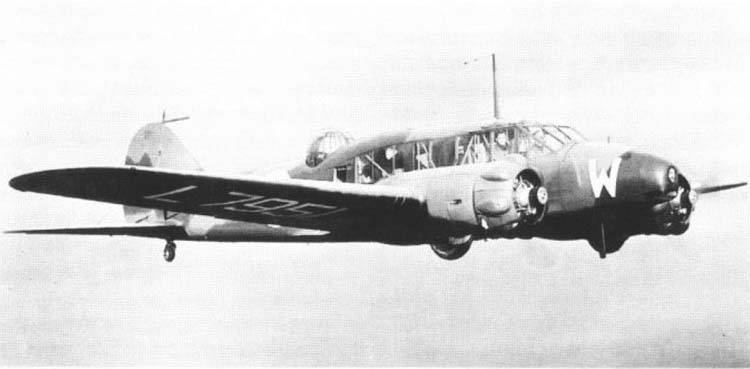
Ansons for export
Anson began its military service and established itself so well as a patrol aircraft that it began to show interest abroad. Especially countries with coastlines that need to be controlled.
Australia has ordered 12 vehicles. After testing, the order was increased by another 36 aircraft. Some of the planes were equipped with equipment for blind flights from the Sperry company. And just before the start of World War II, Australia received 82 Anson.
Finland acquired three aircraft. One is Estonia.
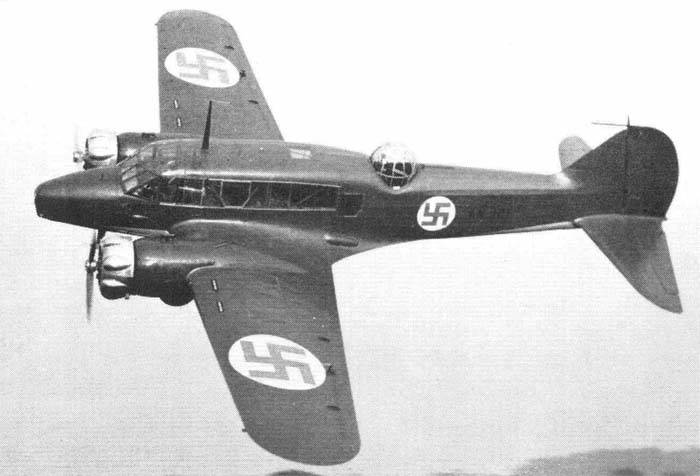
Airplane with the emblems of the Finnish Air Force
By the way, the Estonian aircraft soon went to the Soviet Air Force and became part of the aviation of the 22nd corps of the Red Army in the Baltic States. There this "Anson" met the beginning of the war, but its further fate is unknown.
One plane went to Egypt, four planes were bought by Ireland, six of the ordered 6 were received by Turkey, the rest were requisitioned.
12 "Ansons" got to Greece, and 6 machines were presented by Britain to Iraq.
It was funny with Iraqi cars: exactly six months later, the British smashed their gifts during an air strike on May 2, 1941, when they suppressed the rebellion of the pro-German Prime Minister of Iraq, Rashid Ali al-Gailani.
Bombed on their submarines
But the bulk of the Ansons fell under the command of the Royal Air Force Coastal Command.
There, the aircraft regularly performed tasks of patrolling coastal waters until the beginning of World War II with practically no changes in design. However, the crew was increased by one person, and the navigator-observer became a relief for the pilots. More machine guns "Lewis" were replaced by more modern "Vickers K".
By 1939, it became clear that Anson was outdated and would be nice to replace. A replacement was found in the form of the American Hudson, which was also converted from the passenger Lockheed-14 and represented the next generation of aircraft. The Hudson flew almost twice as fast and three times as far as the Anson.
However, the war began and 12 squadrons of the Coastal Command entered it on the Anson.
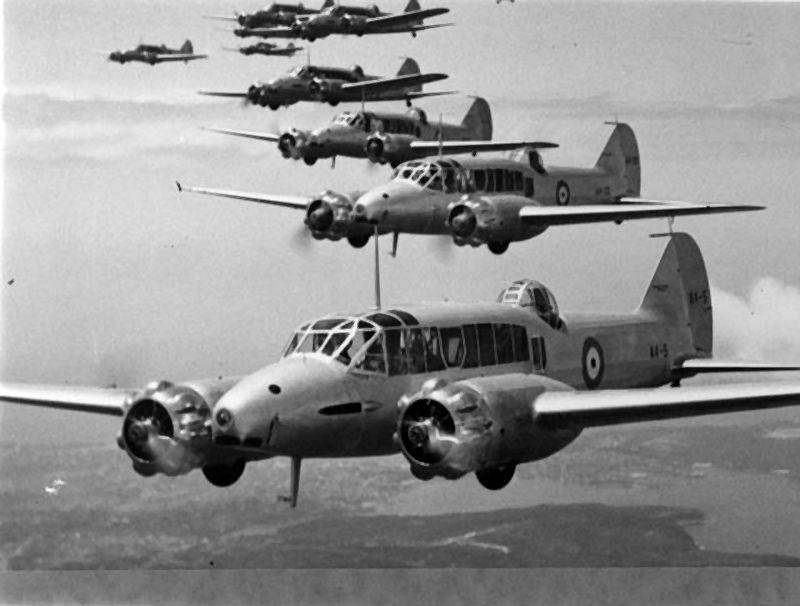
The Ansons entered, let's say, cheerfully. The first day of hostilities is called September 5, 1939, when the Ansons began attacking German submarines.
Yes, it was the Ansons from the 233rd Squadron who were the first to enter the battle and attack the submarines. Two. But alas, these boats were not German, but quite the opposite, they were their own.
To the great happiness of the British submariners, the crews of these planes did not have the proper training and therefore one of them simply missed, and the second ... The second dropped bombs from an unacceptably low height, and they ricocheted off the water surface. And then, as expected, they rushed through the air!
The Anson was so riddled with shrapnel that she could not even make it to the shore. And the crew had to escape in an inflatable boat.
Ansons vs. Messerschmitts
But if we talk about victories, then they were.
Yes, Anson of the 500th Squadron successfully attacked a German submarine that very day and sank it.
In general, the work that fell on the Anson crews and their vehicles inspires respect. - Reconnaissance for Atlantic convoys, rescue operations, meteorological service, patrolling, search and destruction of enemy submarines.
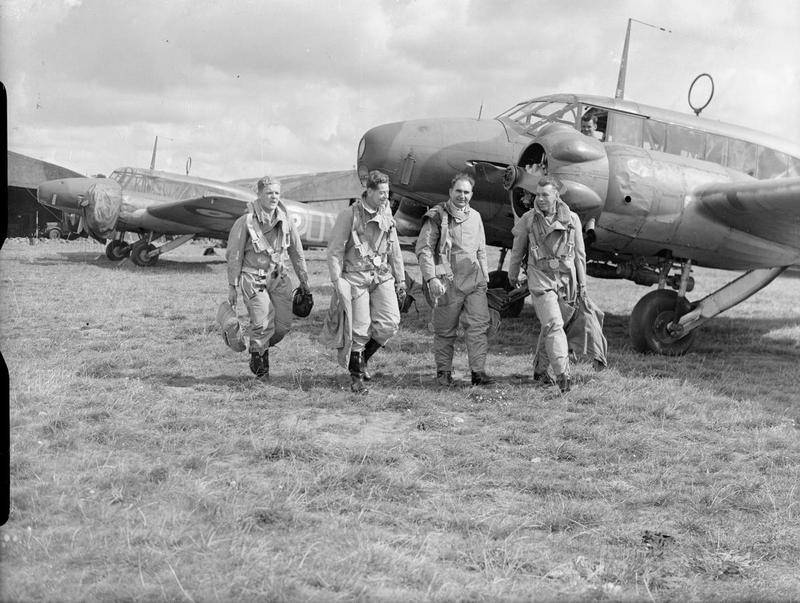
Considering that "Anson" remained a weakly armed, slow aircraft, without reservation, even without tank protection, service on it cannot be called easy.
On the other hand, the good news was the short range of German fighters, which were rarely found on the high seas.
However, there have been exceptions. Over the English Channel, the Germans very often met the Ansons returning or going on patrol. And usually these meetings did not bode well for the Ansons. In June 1940, three Ansons over the English Channel met with nine Bf-109s, returning after escorting bombers to Britain.
A battle took place, as a result of which British aircraft not only survived, but shot down two Messerschmitts. The excuse for the Germans might have been the haste caused by the lack of fuel, but nonetheless: a demonstration battle.
In another situation, in July of the same 1940, the Anson's crew rushed to the aid of the British minesweepers, who were "pressed" by four Bf-110s. The British boldly entered the battle and shot down one Bf-110. It is clear that the other three then blew the British plane to shreds, but the crew was rescued by the same minesweepers.
In general, it is worth noting that the Coastal Command pilots were distinguished by both good training and the highest military spirit. For there is no other way to explain the success of the Anson pilots on their planes, and there is no desire. The pilots and gunners of the Coastal Command behaved more than worthily in that war, not really thinking about the consequences, attacking the enemy, which often surpassed their aircraft in all respects.
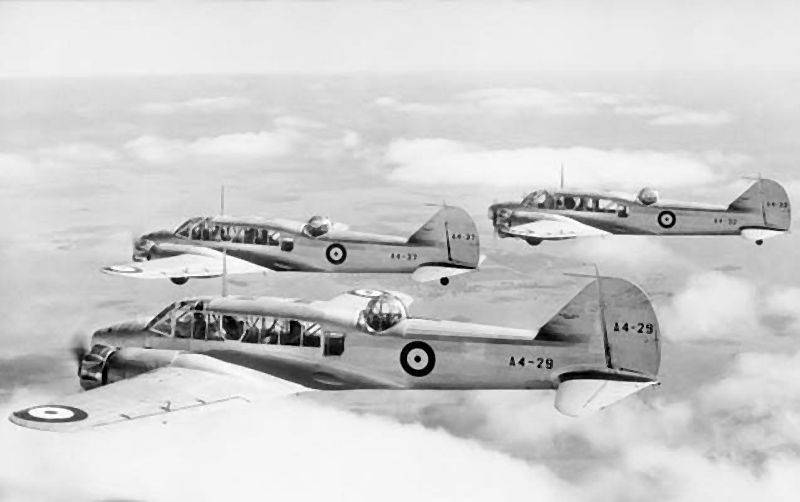
On November 8, 1939, Anson of 500 Squadron attacked two Dornier Do-18 flying boats and shot down one of them. The Anson squadron also includes the Heinkel He-111 bomber and the Heinkel He-115 twin-engine float seaplane, as well as another Dornier flying boat.
They re-armed as best they could
The pilots understood that Anson was not ideal in terms of firepower, and therefore, as they could, they tried to strengthen the armament of their aircraft. Technicians mounted machine guns in the side windows, covering dead zones along the sides of the aircraft. The commander of the 500th Squadron installed a 20mm Hispano cannon in his car, which fired downward and backwards through a hatch in the fuselage. Many other pilots followed suit.
As the war progressed, the Anson's payload was increased to 500 pounds (227 kg), and the aircraft were able to take 2 250-pound depth charges into the bomb bay. Some aircraft were equipped with ASV radars to search for surface targets. The Ansons continued to fly over the sea as part of search and rescue units.
2,5 thousand training "Anson"
Beginning in 1942, the Ansons began to give way to the Hudsons. And they themselves began to receive assignments to training squadrons.
The aircraft turned out to be very convenient for training both pilots and navigators. It is very difficult to say exactly how many RAF pilots and navigators learned their profession at Anson. But the figure of 2 aircraft assembled specifically for training purposes speaks for itself.
These vehicles were produced unarmed, but with the same Armstrong-Whitworth turret. The turret dome turned out to be very convenient for training navigators as an astrophysical one. Some of the aircraft were equipped with various types of radio compasses with open ring or radome antennas.
And for pilots who were to fly multi-engine aircraft, reliable, economical, cheap and simple to the point of primitiveness "Anson" was the best fit.
A separate series produced 313 aircraft with new hydraulically driven turrets from the Blenheim bomber (Bristol B.I MkVI product) for training gunners.
Paradoxically, the production of the Ansons not only did not decline as it became a training aircraft, but on the contrary increased. And since Anson was destined to become the main training vehicle for the Royal Air Force (except for fighters, of course), in 1939 the Air Force issued an order to Avro for 1 aircraft, and in 500 for 1942 more.
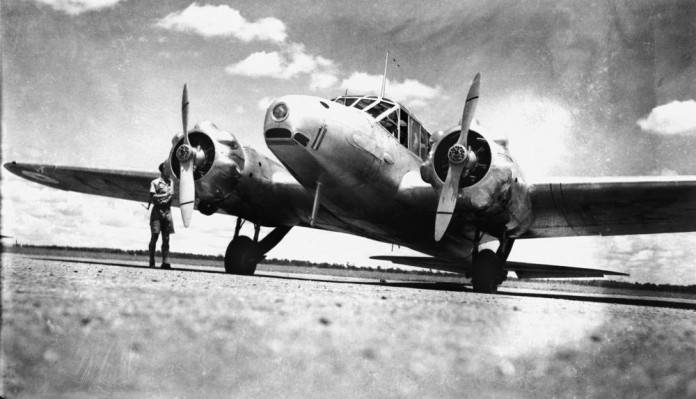
It so happened that the aircraft brought the main benefit precisely as a training vehicle for training pilots, navigators and gunners.
By the way, throughout the war, the export of "Ansons" continued. The Australians, who liked the plane, used the received vehicles throughout the war as a patrol, anti-submarine, transport aircraft. "Ansons" served there not only throughout the war, but also remained in the ranks for a long time after it. The last Australian Anson was decommissioned in 1968.
The planes were used in the Air Force of the South African Union and in Canada.
Anson modifications
With the abandonment of the use of "Anson" as a combat aircraft, it began to be used as a transport.
In 1943, a modification X appeared, with a reinforced floor, which made it possible to transport a certain amount of cargo.
In 1944, modifications XI and XII were produced, special military transport versions of the Anson, which were planned to be used as staff, liaison and ambulance aircraft. A total of 90 aircraft of type XI and 246 units of type XII were manufactured. All were operated by the Royal Air Force.
In Canada, the production of Anson, a modification of Anson II, was launched. It was equipped with American "Jacobs" L6MB engines of 330 hp. from. Externally, the aircraft also differed in a slightly different cockpit glazing, a different landing gear design and materials used in the airframe design.
A total of 1 of these "Ensons" were manufactured. Plus, 050 aircraft of the Anson III modification with Wright R-223-E760 Whirlwind engines with a capacity of 1 hp were also manufactured at British factories. from.
Another 1 Anson Vs were produced unarmed, as training aircraft powered by the Pratt & Whitney R-070 Wasp Junior 985 hp engines. from. Ansons of the fifth modification were used by the Canadian Air Force until the end of the 450s.
After the Second World War ended, as expected, the sale began. Since the Anson was replaced by the Hudson, and there was no need to train so many pilots, the RAF coffers began to replenish.
Ansons scattered literally all over the world, having received registration in Belgium, Egypt, Iran, Israel, Norway, Portugal, Saudi Arabia, the Netherlands, France (the record holder for the purchase - 223 aircraft), Kenya, Uganda, Singapore, Bahrain, Jordan, Denmark ...
Passenger "Avro-19"
But in peacetime, many countries wanted to return to normal passenger traffic. Here the Avro company decided to be in the subject and created at the end of the war a civilian version of Anson XII, with windows, decent soundproofing for that time. The salon was redesigned to accommodate 9 passengers.
They called it "Avro-19". And after the war, the plane operated quite normally with many UK airlines. Some cars were even exported. A total of 263 Avro-19 vehicles were produced.
Working pony
Naturally, the service as a training aircraft continued. After the war, without haste, it was possible to create specialized aircraft for all types of training.
Anson T.20 is a training bomber with a fully glazed front and bombsights. T.21 - flying navigator training class. T.22 - aircraft for training radio operators.
The last "Anson" modification T.21 was delivered to the customer in May 1952.
It turns out that the continuous production of "Ansons" of all modifications was 17 years. Not a record, but a pretty decent figure.
In terms of quantity, a total of 11 Ansons of all types were produced. 020 were manufactured by Avro, 8 units were produced in Canada.
But discontinuance does not mean the plane is out of service, does it? And so it happened. Anson served until 1968. The last war for him was the civil war in Nigeria, where six ambulances "Anson" C.19 worked.
And in the same 1968 the service life of this aircraft was over. The Ansons served 34 years in the British Air Force alone.
It is possible that some cars in the Third World countries have served longer, but there is no reliable information on this. But, given the simplicity and reliability, they could easily.
An interesting life for this very unprepossessing plane, isn't it? No records, no stunning flights, no impressive victories and other successes.
An ordinary plane, a "working pony" of the RAF and not only them, simply serving reliably and doing its job where it was needed. I looked for, saved, fought, taught.

Real private air fleet, who kept on his wings exactly as much as was needed.
LTH Anson Mk.I
Wingspan, m: 17,20
Length, m: 12,88
Height, m: 3,99
Wing area, sq.m: 38,09
Weight, kg
- empty aircraft: 2 438
- normal takeoff: 3 629
Engine:
2 x Armstrong-Siddeley "Cheetah IX" x 350 liters. from.
Maximum speed km / h: 303
Cruising speed, km / h: 254
Practical range, km: 1 271
Practical ceiling, m: 5 790
Crew, people:
3-5
Armament:
- one fixed, forward-facing 7,69-mm machine gun in the bow
- one 7,69-mm machine gun in the dorsal turret
- up to 163 kg of bombs.
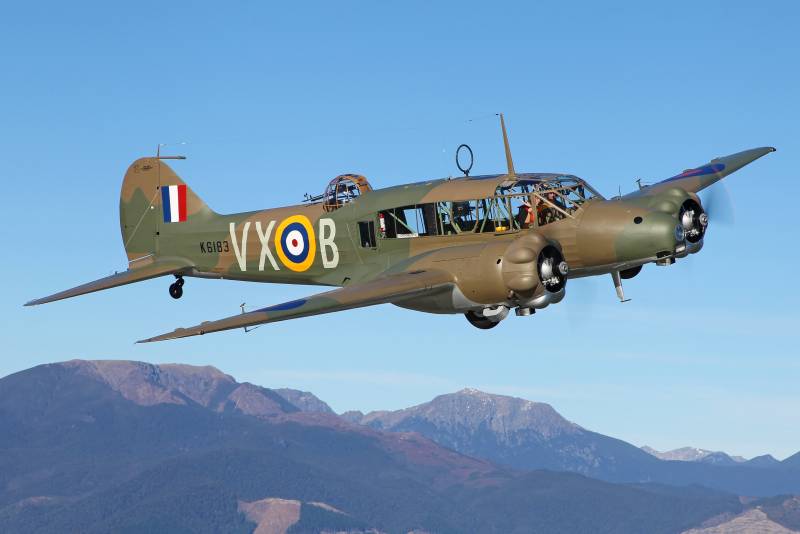
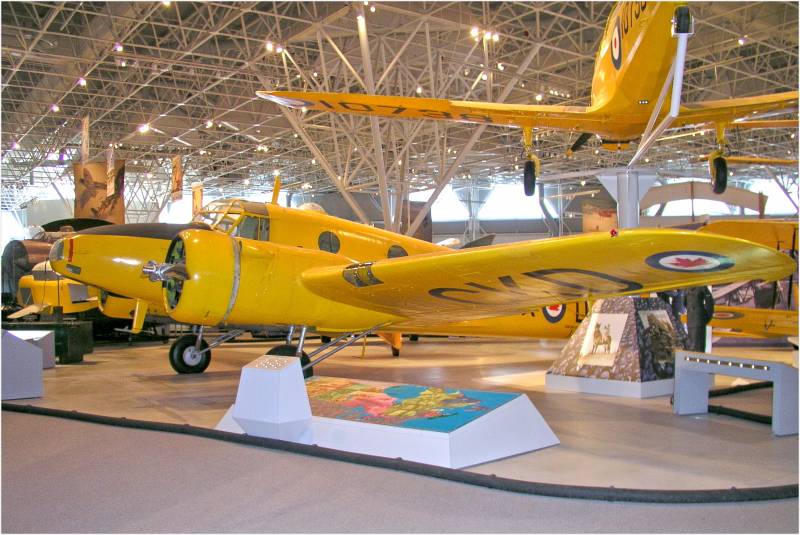
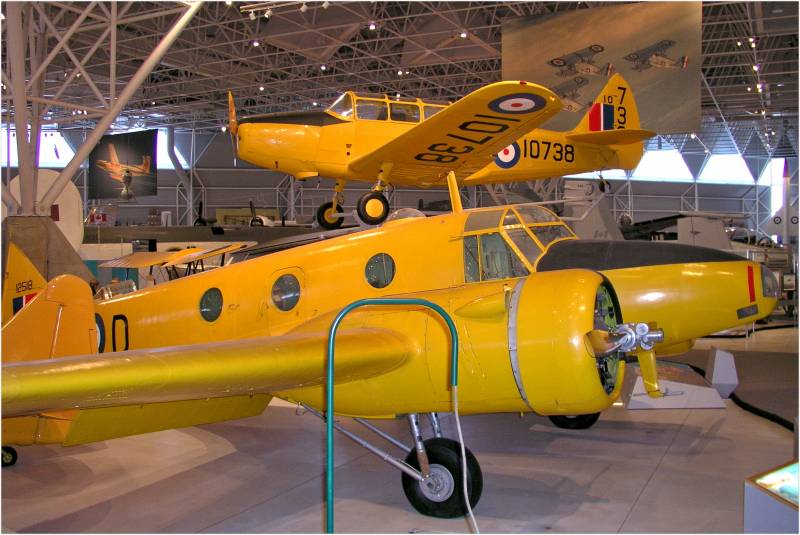
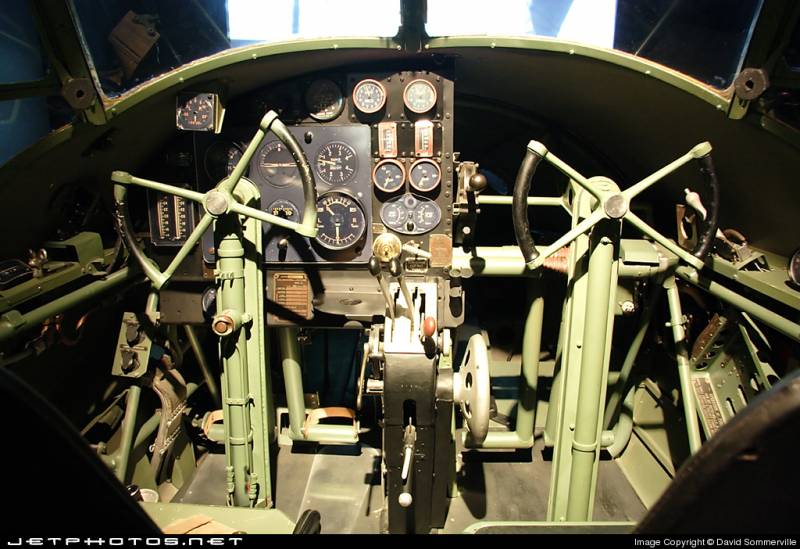
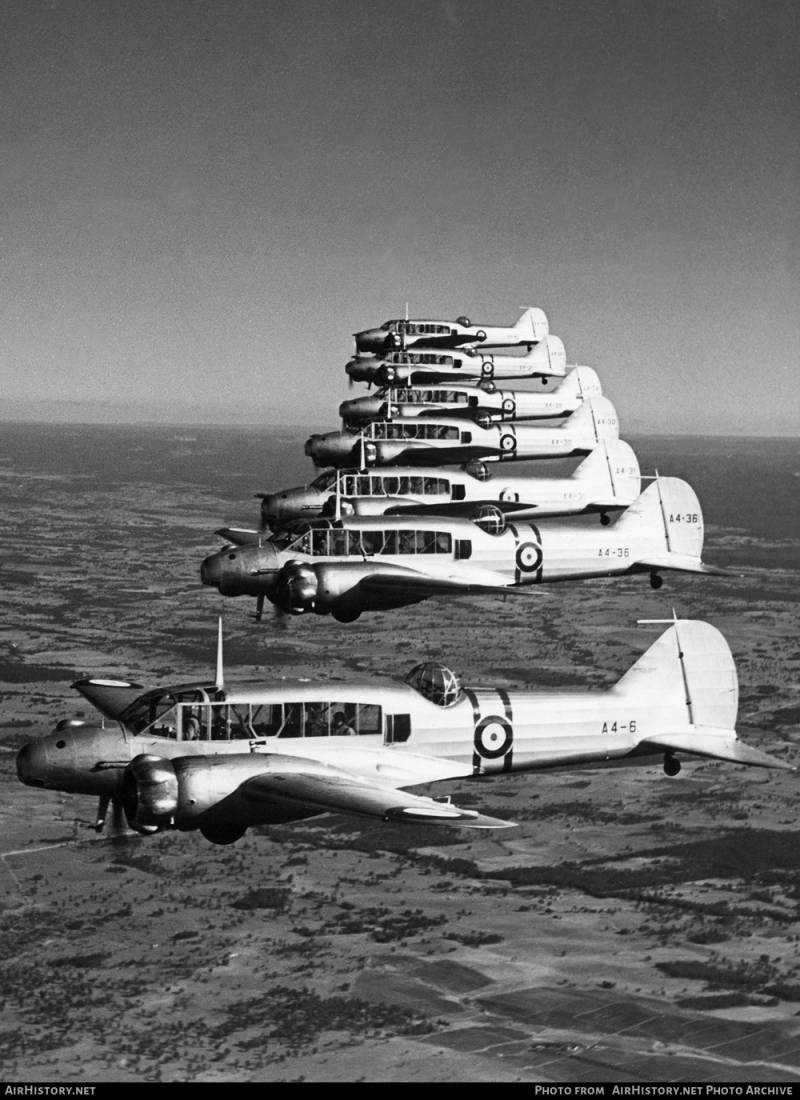
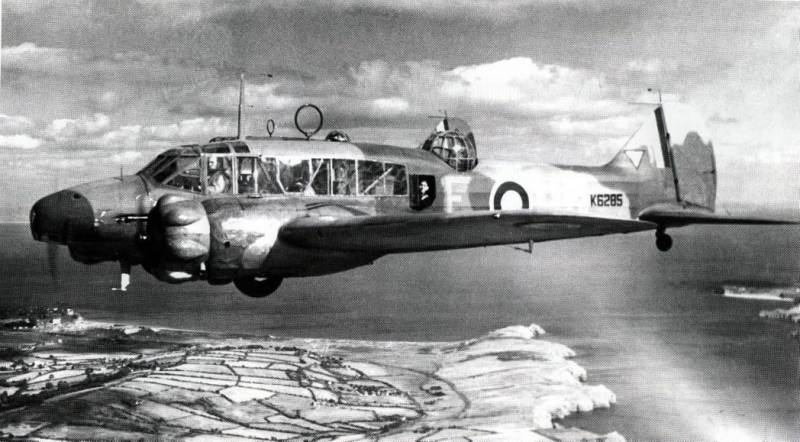
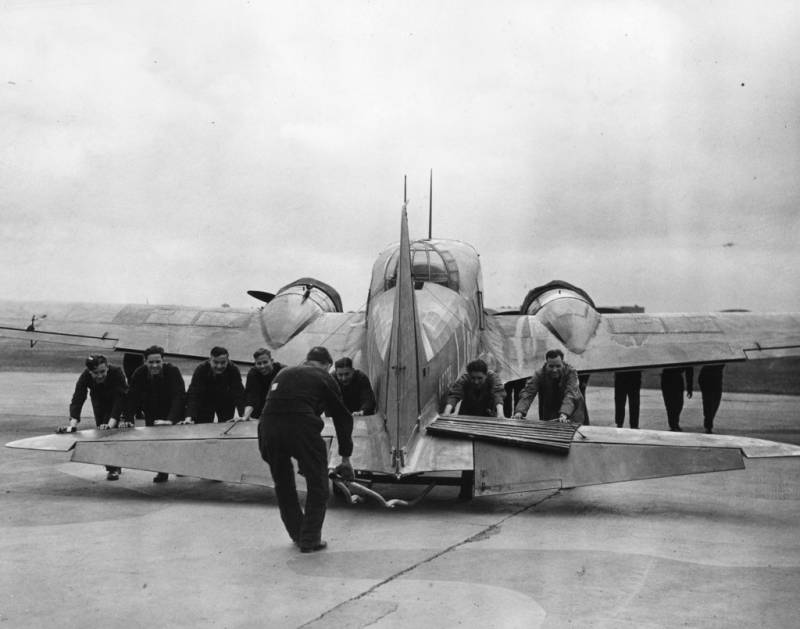
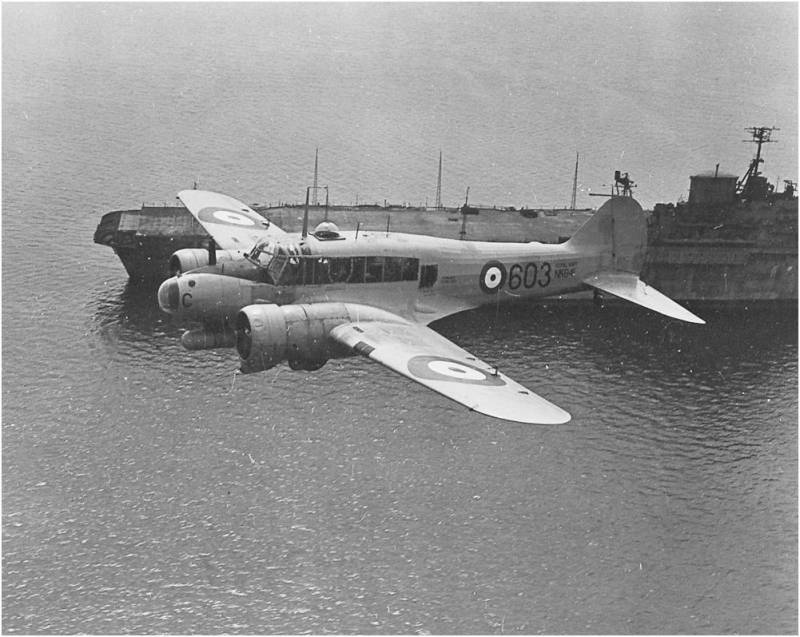
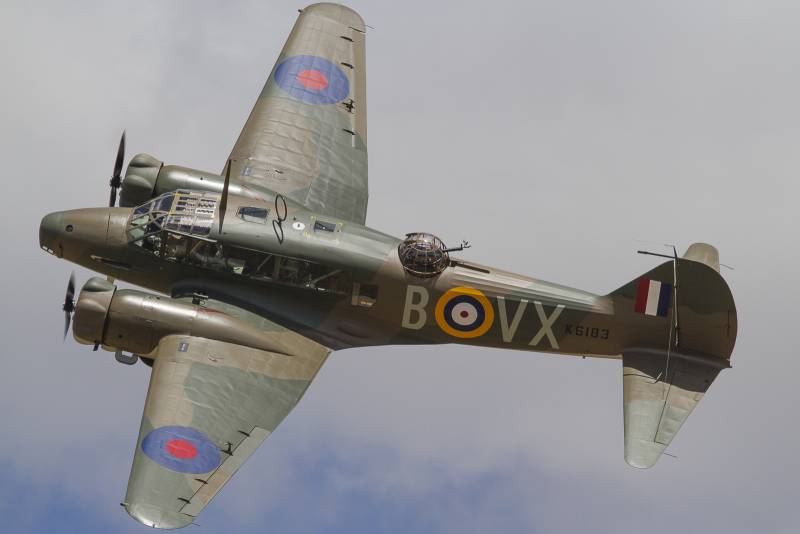
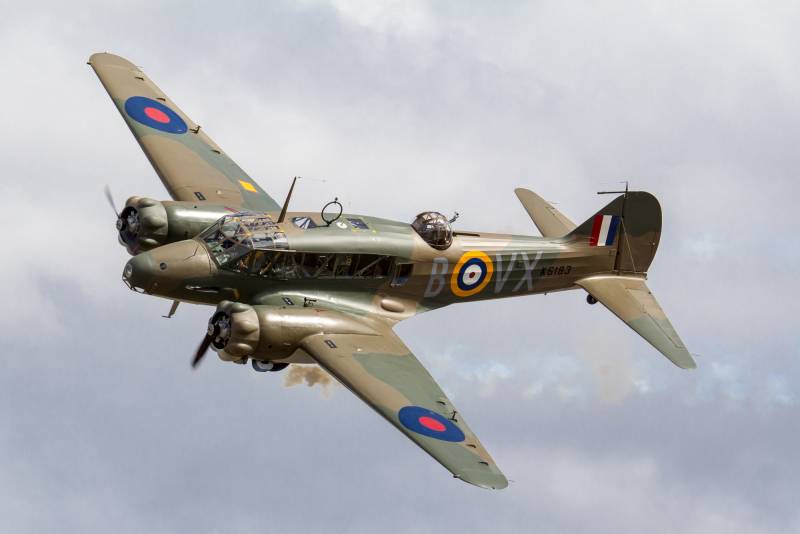
Information